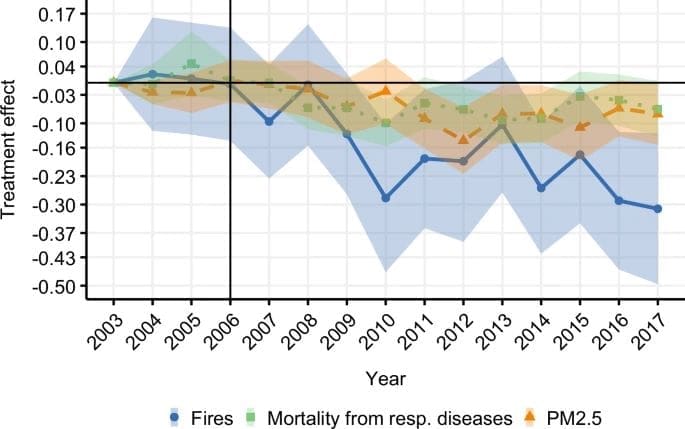Protecting the Amazon rainforest is delivering critical benefits for human health, as new research reveals that conservation efforts reduce air pollution and lower rates of respiratory diseases in nearby populations.
A study conducted by the University of Bonn and the Universidade Federal de Minas Gerais in Brazil highlights how measures to combat deforestation, particularly slash-and-burn practices, lead to significant health improvements.
The findings were published in Nature Communications, Earth & Environment.

The Amazon, often subjected to deforestation fires to clear land for agriculture or grazing, saw nearly 70,000 square kilometers of forest burned in 2019 alone – an area the size of Bavaria (Germany). These fires are not natural but are driven by large landowners and landgrabbers exploiting the forest for economic gain.
Beyond the well-known impacts on biodiversity and climate, the smoke from these fires contributes heavily to respiratory and cardiovascular diseases in local populations.
“We have thus investigated to what extent forest protection measures affect the health of people living in the corresponding regions,” said Yannic Damm, a researcher at the University of Bonn. Damm, along with his colleagues, focused on three conservation measures introduced between 2006 and 2010 that were specific to the Amazon biome, the region defined by the forest’s original boundary.
Among these measures, the widely known Soy Moratorium stands out. This initiative, a pact among global trading companies, prohibited the purchase of soy grown in freshly deforested areas. “As a result, deforestation pressure has measurably reduced,” Damm explained.
These policies targeted the Amazon biome, a region defined by its original forest boundaries, rather than the legally defined Amazonian states with lower protections.
To assess the health impact of these measures, researchers compared municipalities on either side of the biome boundary. In regions under heightened protections, air quality improved markedly, with fine particulate matter pollution decreasing by nearly 7 percent more than in neighboring areas.
This improvement translated into tangible health benefits, as rates of hospitalizations and deaths due to respiratory and cardiovascular diseases declined significantly. The researchers estimate that these measures save approximately 680 lives annually among the four million people living in the protected areas.
“Our study has two messages,” stated Professor Jan Börner leader of the research group at the Institute for Food and Resource Economics (ILR) at the University of Bonn. “Namely, firstly, that the destruction of the rainforest can be successfully curbed. And, secondly, that this benefits not only the diversity of species and the global climate but also very specifically and very quickly the local population. This is an aspect that is still given too little consideration when assessing protective measures.”
The research underscores the often-overlooked link between environmental conservation and human health. It also offers a compelling argument for expanding forest protection policies, as these not only preserve ecosystems but directly improve the lives of those most affected by deforestation.
Journal Reference:
Damm, Y., Börner, J., Gerber, N. et al. ‘Health benefits of reduced deforestation in the Brazilian Amazon’, Communications Earth & Environment 5, 693 (2024). DOI: 10.1038/s43247-024-01840-7
Article Source:
Press Release/Material by University of Bonn
Featured image credit: Jonny Lew | Pexels




